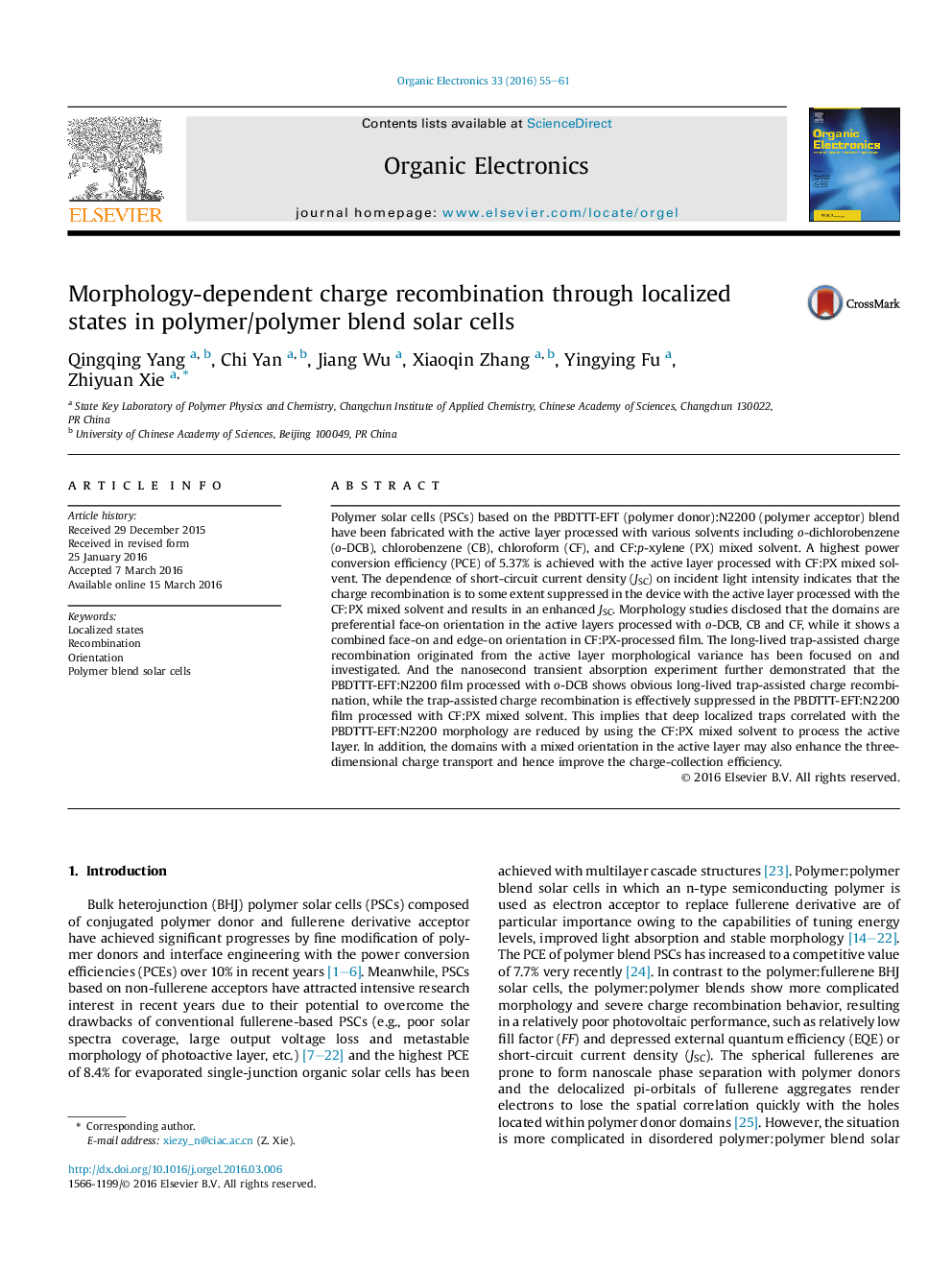| کد مقاله | کد نشریه | سال انتشار | مقاله انگلیسی | نسخه تمام متن |
|---|---|---|---|---|
| 1264212 | 1496824 | 2016 | 7 صفحه PDF | دانلود رایگان |
• The PBDTTT-EFT:N2200 PSCs processed with CF:PX mixed solvent show an enhanced PCE of 5.37%.
• The CF:PX induces the edge-on orientation arising in the face-on orientation dominated film.
• Bimolecular and trap-assisted recombination are all suppressed in devices fabricated with CF:PX.
• Deep localized traps are reduced in devices fabricated with CF:PX.
Polymer solar cells (PSCs) based on the PBDTTT-EFT (polymer donor):N2200 (polymer acceptor) blend have been fabricated with the active layer processed with various solvents including o-dichlorobenzene (o-DCB), chlorobenzene (CB), chloroform (CF), and CF:p-xylene (PX) mixed solvent. A highest power conversion efficiency (PCE) of 5.37% is achieved with the active layer processed with CF:PX mixed solvent. The dependence of short-circuit current density (JSC) on incident light intensity indicates that the charge recombination is to some extent suppressed in the device with the active layer processed with the CF:PX mixed solvent and results in an enhanced JSC. Morphology studies disclosed that the domains are preferential face-on orientation in the active layers processed with o-DCB, CB and CF, while it shows a combined face-on and edge-on orientation in CF:PX-processed film. The long-lived trap-assisted charge recombination originated from the active layer morphological variance has been focused on and investigated. And the nanosecond transient absorption experiment further demonstrated that the PBDTTT-EFT:N2200 film processed with o-DCB shows obvious long-lived trap-assisted charge recombination, while the trap-assisted charge recombination is effectively suppressed in the PBDTTT-EFT:N2200 film processed with CF:PX mixed solvent. This implies that deep localized traps correlated with the PBDTTT-EFT:N2200 morphology are reduced by using the CF:PX mixed solvent to process the active layer. In addition, the domains with a mixed orientation in the active layer may also enhance the three-dimensional charge transport and hence improve the charge-collection efficiency.
Polymer solar cells based on the PBDTTT-EFT:N2200 blend were fabricated with various solvents and a highest PCE of 5.37% was achieved for the device processed with CF:PX mixed solvent. The CF:PX-processed active layer shows a combined face-on and edge-on domains, and the resultant device shows reduced bimolecular and trap-assisted charge recombination compared to those processed with o-DCB, CB or CF. Correspondingly, the JSC is increased from 10.21 mA/cm2 to 12.37 mA/cm2.Figure optionsDownload as PowerPoint slide
Journal: Organic Electronics - Volume 33, June 2016, Pages 55–61
